
The Museo Soumaya is a private museum in Mexico City and a non-profit cultural institution with two museum buildings in Mexico City — Plaza Carso and Plaza Loreto. It has over 66,000 works from 30 centuries of art including sculptures from Pre-Hispanic Mesoamerica, 19th- and 20th-century Mexican art and an extensive repertoire of works by European old masters and masters of modern western art such as Auguste Rodin, Salvador Dalí, Bartolomé Esteban Murillo and Tintoretto. It is called one of the most complete collections of its kind.
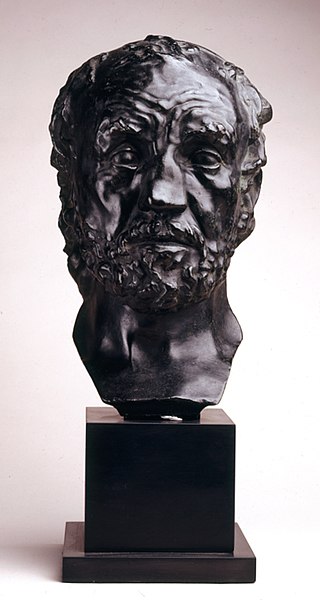
Man with the Broken Nose is a sculpture by Auguste Rodin created between 1863 and 1864 and approved by the Salon in 1875. It is considered the first by Rodin in which life is represented over the grace pervading the academic circles and aesthetic of the time.

I Am Beautiful, also known as The Abduction, is a sculpture of 1882 by the French artist Auguste Rodin, inspired in a fragment from Charles Baudelaire's collection of poems Les Fleurs du mal.

Fugitive Love is a sculpture by Auguste Rodin made between 1886 and 1887, both sculpted in marble and cast in bronze. It represents a man and a woman embracing each other on top of a rock. More specifically, the author was inspired by the story of Francesca da Rimini's love affair with Paolo Malatesta, an allusion to Dante Alighieri's depiction of lust on the second circle of Hell in his Inferno.
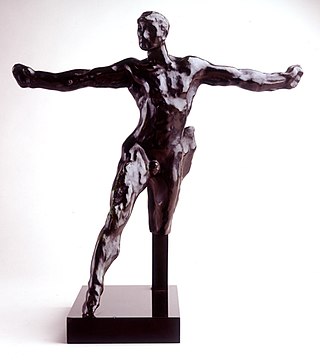
Standing Mercury is a bronze sculpture by French artist Auguste Rodin, first exhibited in 1888. Rodin depicts the mythological god Mercury, son of Maia and Jupiter—messenger of the gods and guide to the Underworld—as a young man, representing eloquence and reason. This depiction is opposite to the traditional representation of Hermes, its Greek counterpart, as a mature man.
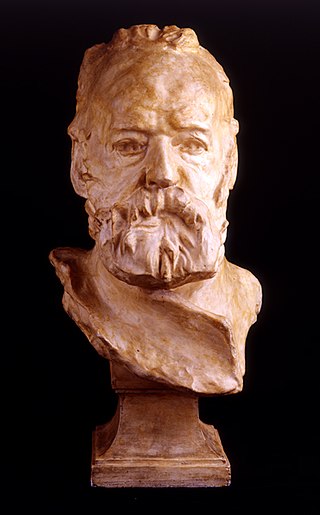
The Bust of Victor Hugo is an 1883 patinated plaster sculpture by the French artist Auguste Rodin of the Romantic writer Victor Hugo. It is now in the Museo Soumaya in Mexico City.

Danaid is a sculpture by Auguste Rodin, based on the account in the Metamorphoses of Hypermnestra, eldest of the Danaïdes.

The Old Tree is a plaster sculpture by the French artist Auguste Rodin, originally conceived as part of his The Gates of Hell project.

The Maiden Kissed by the Ghost is an 1880 sculpture by the French artist Auguste Rodin. It was first exhibited at his fourteenth exhibition, hosted by the National Society Salon. One of the marble versions of the work is now in the Museo Soumaya in Mexico City.

The Succubus is a bronze sculpture with a green and dark brown patina. It was originally conceived in 1889 by the French artist Auguste Rodin as part of a set of works showing sirens and Nereids. It later formed part of his state-commissioned monument to Victor Hugo. It is now in the Museo Soumaya in Mexico City.

Glaucus is a sculpture by the French artist Auguste Rodin, first conceived in 1886 as a representation of the mythological figure Glaucus, son of Poseidon. Originally made in plaster, bronze casts of it are now in the Brooklyn Museum and the Museo Soumaya.

Youth Triumphant is one of the sculptures created by Auguste Rodin as part of the planning for his The Gates of Hell. It was inspired by Jean Dampt's The Grandmother's Kiss, exhibited in 1893. That work shows a young woman resting in the arms of an old woman, with the pair deeply kissing.

Young Mother is a bronze sculpture by Auguste Rodin with a brown and green patina, conceived in 1885 and cast by the Rudier Foundry.
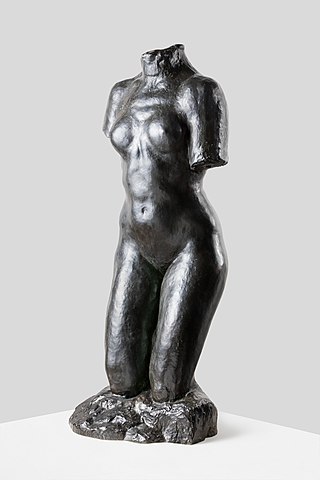
The Prayer is a 1909 sculpture by Auguste Rodin. As in his The Walking Man, he explores a fragment of a figure.

The Shade, The Slave or The Titan is a sculpture by the French artist Auguste Rodin.

Ovid's Metamorphoses or The Satyrs is a sculpture by Auguste Rodin, created as part of The Gates of Hell.

Paolo and Francesca is a sculptural group by Auguste Rodin, showing Paolo and Francesca da Rimini, damned lovers from Canto V of Dante's The Divine Comedy.
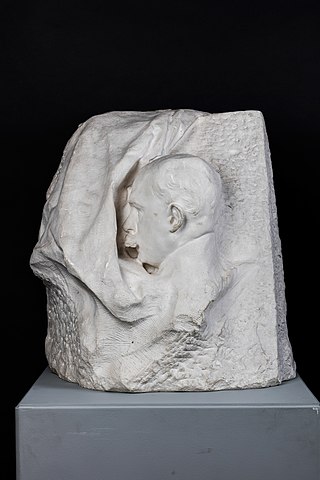
Octave Mirbeau is an 1895 plaster relief by Auguste Rodin of the writer Octave Mirbeau, now in the Museo Soumaya. He had got to know him thanks to The Age of Bronze and The Gates of Hell - Mirbeau visited Rodin's studio, published the first description of Gates in the review La France, promoted Rodin's other work and died only a few months before the sculptor.

Suzon is an early bust of a woman by Auguste Rodin, created between 1872 and 1873 when he wholly worked on commissions. It was inspired by late 18th century Romantic works whilst Rodin was in exile in Brussels due to the Franco-Prussian War. He created it in homage to Albert-Ernest Carrier-Belleuse, another sculptor also in exile there who was highly influential on Rodin's early works.

Torso of Adele is an 1878-1884 sculpture by the French artist Auguste Rodin, originally modelled in plaster before being worked in terracotta.




















